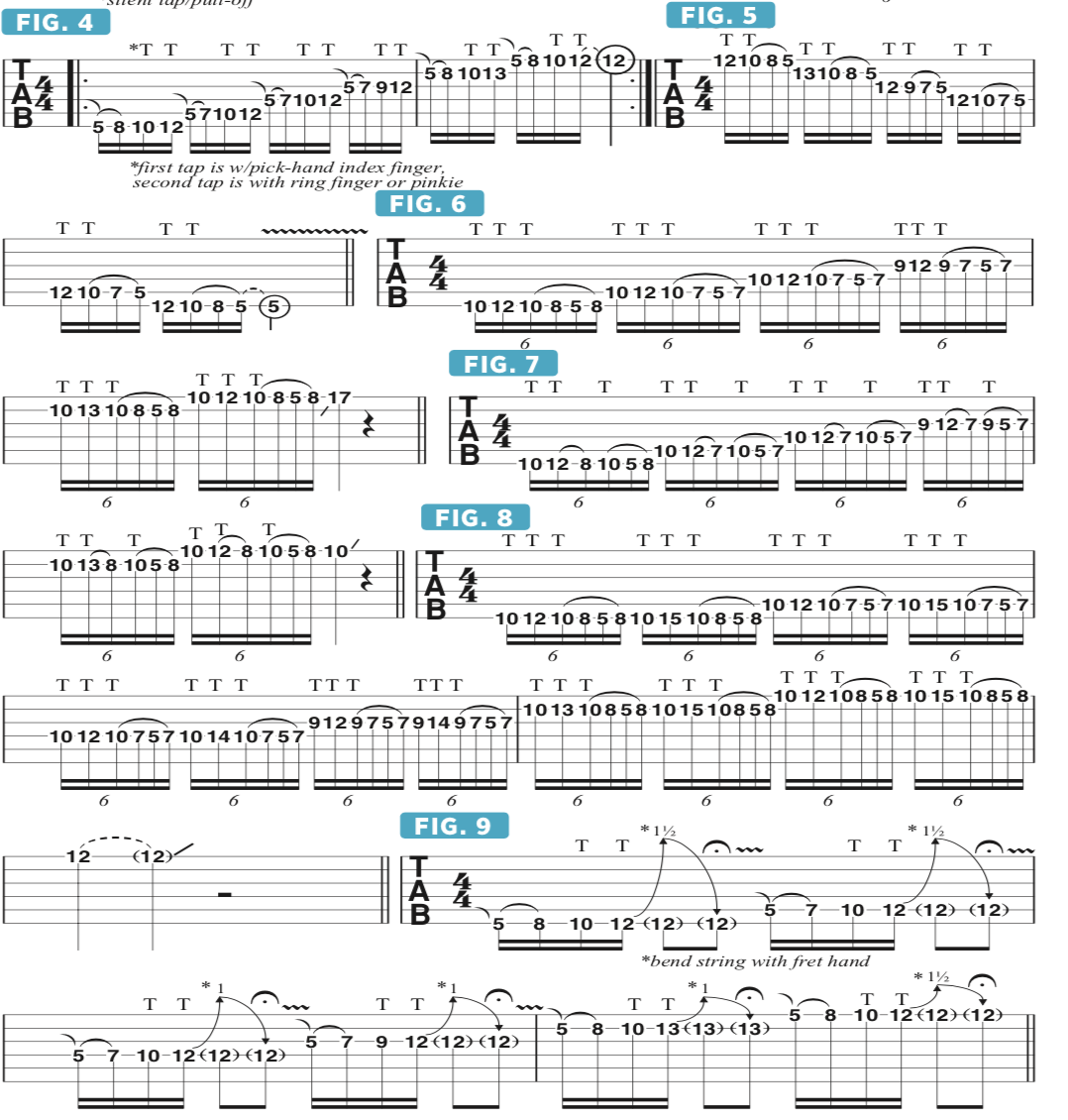A Guide to Fretboard Tapping Using Multiple Fingers
Learn how to utilize multiple taps with different fingers of the pick hand.
Ever since Edward Van Halen blew everyone’s minds back in 1978 with his fretboard tapping tour de force, “Eruption,” guitarists have looked to master and expound upon this trailblazing technique.
Tapping allows guitarists to play at breathtaking speeds and perform melodic phrases that would otherwise be impossible. This month, I’d like to expand on the basic fretboard tapping approach by utilizing multiple taps with different fingers of the pick hand.
A tap is performed by hammering onto a note with a fingertip of the pick hand, such as the index or middle finger. After the tap, the finger then “pushes off” of the string to sound a lower note, fretted conventionally.
In FIGURE 1, I begin by placing my pick-hand middle finger on the high E string’s 10th fret and using the finger to get the string ringing by pushing off and sounding an A note (this is known as a “silent tap/pull-off”), fretted at the fifth fret with the index finger of my fret hand. I then hammer my ring finger on to the C note at the eighth fret and reapply the 10th-fret tap, sounding the D note. The entire sequence then repeats. Instead of starting with the silent tap/pull-off, I can also sound the tap at the 10th fret as the first note in the sequence, as shown in FIGURE 2.
Another common version is one popularized by Randy Rhoads, wherein two taps are applied within the phrase, as demonstrated in FIGURE 3. The tap/release is performed twice, followed by the double pull-off from C at the eighth fret to A at the fifth fret.
One can expand on the standard tapping technique by using more than one tapping finger. In the next five examples, I employ two pick-hand fingers for tapping. The lower of the two notes on any given string is tapped with the index finger, and the higher note is tapped with either the ring finger or pinkie.
Let’s keep things relatively simple by only using notes from the A minor pentatonic scale (A C D E G). Once you have a handle on the technique, experiment with other scales and note patterns. I begin FIGURE 4 by simply hammering onto the sixth string’s fifth fret with my fret-hand index finger, followed by a hammer-on with the pinkie at the eighth fret. I then tap the 10th fret with my pick-hand index finger, followed by the ring finger at the 12th fret. The concept is then continued across all six strings in an ascending manner. FIGURE 5 illustrates this idea in a descending pattern.
FIGURE 6 demonstrates sequential taps, with the first three notes in each sextuplet being tapped, followed by three conventionally fretted notes, beginning on the sixth string and moving across the higher strings. If we add a fret-hand pull-off after the second tapped note, we get the cool variation shown in FIGURE 7. And if we alternate between two different higher tapped notes, we get the more challenging lick shown in FIGURE 8. And lastly, FIGURE 9 incorporates string bending. Once the second tap is applied on a string, the bend is executed with the fret hand.


Get The Pick Newsletter
All the latest guitar news, interviews, lessons, reviews, deals and more, direct to your inbox!









![Joe Bonamassa [left] wears a deep blue suit and polka-dotted shirt and plays his green refin Strat; the late Irish blues legend Rory Gallagher [right] screams and inflicts some punishment on his heavily worn number one Stratocaster.](https://cdn.mos.cms.futurecdn.net/cw28h7UBcTVfTLs7p7eiLe.jpg)
